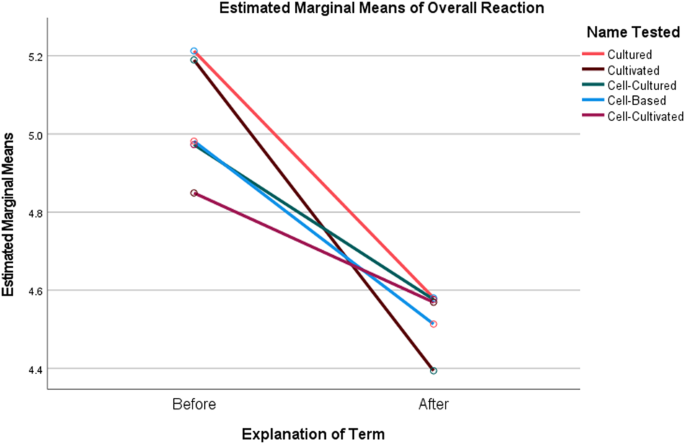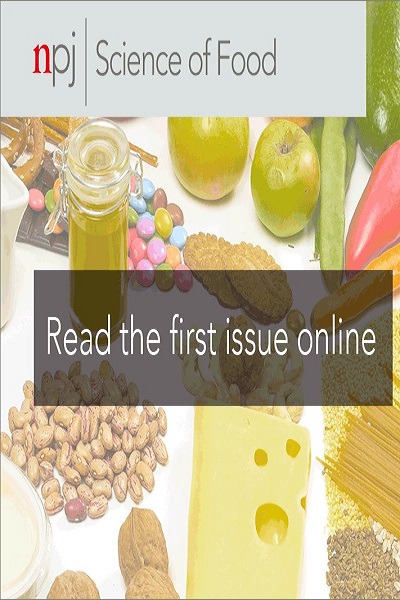Cell-based, cell-cultured, cell-cultivated, cultured, or cultivated. What is the best name for meat, poultry, and seafood made directly from the cells of animals?
IF 6.3
1区 农林科学
Q1 FOOD SCIENCE & TECHNOLOGY
引用次数: 0
Abstract
To be sold in the United States, meat, poultry, and seafood products made from cultured cells must be labeled with a “common or usual name” to help consumers understand what they are purchasing. The terms “Cultured,” “Cultivated,” “Cell-Cultured,” “Cell-Cultivated,” “Cell-Based” and a control (without a common or usual name) were tested using an online experiment. Two regulatory criteria were assessed: that the term distinguishes the novel products from conventional products, and appropriately signals allergenicity. Three consumer acceptance criteria were assessed: that the term is seen as appropriate, does not disparage the novel or conventional products, nor elicit perceptions that the products are unsafe, unhealthy, or not nutritious. Each term was shown on packages of frozen Beef Filets, Beef Burgers, Chicken Breasts, Chicken Burgers, Atlantic Salmon Fillets, and Salmon Burgers. A representative sample of 4385 Americans (18 + ) were randomly assigned to view a single product with a single term or the control. Consumers’ ability to distinguish tested terms from conventional products differed by product category. “Cultured” and “Cultivated” failed to adequately differentiate the novel products from “Wild-Caught and Farm-Raised” salmon products. “Cultivated” failed to differentiate the novel Beef Filet product from “Grass-Fed” Beef Filets. “Cell-Cultured,” “Cell-Cultivated,” and “Cell-Based” each signaled that the products were different from conventional products across the proteins, and signaled allergenicity, meeting the two key regulatory criteria. They were not significantly different on most consumer perception measures. However, “Cell-Cultured” may have slightly better consumer acceptance across the novel beef, chicken, and salmon products, recommending its universal adoption.


细胞的,细胞培养的,细胞培养的,培养的或培养的直接由动物细胞制成的肉、家禽和海鲜的最佳名称是什么?
要在美国销售,由培养细胞制成的肉类、家禽和海产品必须贴上“通用或常用名称”的标签,以帮助消费者了解他们购买的是什么。使用在线实验对术语“培养”、“培养”、“细胞培养”、“细胞培养”、“细胞为基础”和对照(没有通用或常用名称)进行测试。评估了两个监管标准:术语将新产品与传统产品区分开来,并适当地表示过敏原。评估了三个消费者接受标准:该术语被认为是适当的,不会贬低新颖或传统产品,也不会引起产品不安全、不健康或没有营养的看法。每个学期都出现在冷冻牛柳、牛肉汉堡、鸡胸肉、鸡肉汉堡、大西洋鲑鱼片和鲑鱼汉堡的包装上。4385名美国人(18岁以上)的代表性样本被随机分配到带有单一术语或对照的单一产品。消费者区分测试术语和传统产品的能力因产品类别而异。“养殖”和“养殖”未能充分区分新产品与“野生捕捞和养殖”鲑鱼产品。“养殖”未能将新型牛柳产品与“草饲”牛柳区分开来。“细胞培养的”、“细胞培养的”和“细胞为基础的”每一个都标志着产品在蛋白质上与传统产品不同,并标志着过敏性,符合两个关键的监管标准。他们在大多数消费者感知测量上没有显著差异。然而,“细胞培养”在新型牛肉、鸡肉和鲑鱼产品中可能会有更好的消费者接受度,建议普遍采用。
本文章由计算机程序翻译,如有差异,请以英文原文为准。
求助全文
约1分钟内获得全文
求助全文
来源期刊

NPJ Science of Food
FOOD SCIENCE & TECHNOLOGY-
CiteScore
7.50
自引率
1.60%
发文量
53
期刊介绍:
npj Science of Food is an online-only and open access journal publishes high-quality, high-impact papers related to food safety, security, integrated production, processing and packaging, the changes and interactions of food components, and the influence on health and wellness properties of food. The journal will support fundamental studies that advance the science of food beyond the classic focus on processing, thereby addressing basic inquiries around food from the public and industry. It will also support research that might result in innovation of technologies and products that are public-friendly while promoting the United Nations sustainable development goals.
 求助内容:
求助内容: 应助结果提醒方式:
应助结果提醒方式:


